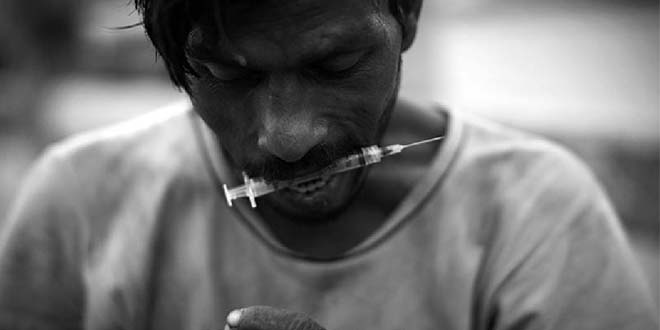
Report: HIV prevalence among people who inject drugs remains high
The world is not on track to reduce HIV transmission among people who inject drugs by 50%, as recent evidence suggests little change in the HIV burden in this population. HIV prevalence among people who inject drugs remains high.
According to the ‘Global Report: UNAIDS Report on the Global AIDS Epidemic 2014’, a Joint United Nations Program on HIV/AIDS published in Sept. 2013, up to 28% in Asia. HIV prevention coverage for people who inject drugs is very low, with only two of 32 reporting countries providing the recommended minimum of at least 200 sterile syringes per year for each person who injects drugs.
As per the report, of the 35 countries providing data in 2013, all but four reached less than 10% of opiate users with substitution therapy. In addition to exceptionally low coverage, an effective AIDS response among people who inject drugs is undermined by punitive policy frameworks and law enforcement practices, which discourage individuals from seeking the health and social services they need.
Despite the fact that injecting drug use has led to the widespread transmission of HIV worldwide, the provision of HIV prevention, treatment, and care services to (injected drug use) IDU populations remains dismally low.
In 2014, only 8 per cent of injecting drug users worldwide enjoyed access to HIV prevention services of any kind, while substitution therapy–i.e. offering users methadone instead of heroin–is permitted in only 70 countries. Needle and syringe exchange programs are available in only 82 countries.
Of the estimated 14.0 million (range: 11.2 million to 22.0 million) people who inject drugs worldwide, UNODC estimates that 1.6 million (range: 1.2 million to 3.9 million) are living with HIV. That represents a global prevalence of HIV of 11.5 per cent among people who inject drugs
UNODC estimates that there were between 102,000 and 247,000 drug-related deaths in 2011, corresponding to a mortality rate of between 22.3 and 54.0 deaths per million population aged 15-64. This represents between 0.54 per cent and 1.3 per cent of mortality from all causes globally among those aged 15-64.20 The extent of drug-related deaths has essentially remained unchanged globally and within regions.
As per the ‘recommendation of British Advisory Council on Misuse of Drugs: Recommendation 1’, the Local service planners need to review local needle and syringe services (and be supported in this work) in order to take steps to increase access and availability to sterile injecting equipment and to increase the proportion of injectors who receive 100 per cent coverage of sterile injecting equipment in relation to their injecting frequency.
‘Cocaine’ Smoking and Risk of HIV Smoking of crack cocaine was found to be an independent risk factor for HIV among people who were injection drug users. These finding points to the urgent need for evidence-based public health initiatives targeted at people who smoke cocaine. Innovative interventions that have the potential to reduce HIV transmission in this population, including the distribution of safer cocaine kits in rehabilitation centers and medically supervised inhalation rooms, need to be evaluated.

